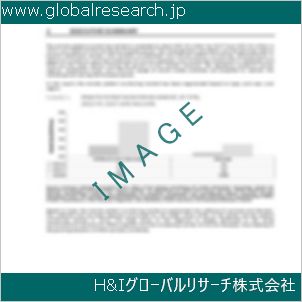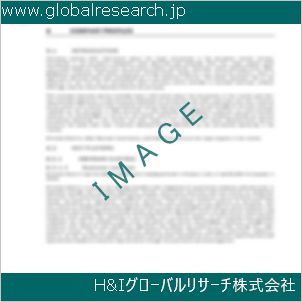Table of Contents
1 Industry Overview of Taxifolin
1.1 Definition and Specifications of Taxifolin
1.1.1 Definition of Taxifolin
1.1.2 Specifications of Taxifolin
1.2 Classification of Taxifolin
1.3 Applications of Taxifolin
1.3.1 Nuclear Application
1.3.2 Non-Nuclear Application
1.4 Industry Chain Structure of Taxifolin
1.5 Industry Overview and Major Regions Status of Taxifolin
1.5.1 Industry Overview of Taxifolin
1.5.2 Global Major Regions Status of Taxifolin
1.6 Industry Policy Analysis of Taxifolin
1.7 Industry News Analysis of Taxifolin
2 Manufacturing Cost Structure Analysis of Taxifolin
2.1 Raw Material Suppliers and Price Analysis of Taxifolin
2.2 Equipment Suppliers and Price Analysis of Taxifolin
2.3 Labor Cost Analysis of Taxifolin
2.4 Other Costs Analysis of Taxifolin
2.5 Manufacturing Cost Structure Analysis of Taxifolin
2.6 Manufacturing Process Analysis of Taxifolin
3 Technical Data and Manufacturing Plants Analysis of Taxifolin
3.1 Capacity and Commercial Production Date of Global Taxifolin Major Manufacturers in 2023
3.2 Manufacturing Plants Distribution of Global Taxifolin Major Manufacturers in 2023
3.3 R&D Status and Technology Source of Global Taxifolin Major Manufacturers in 2023
3.4 Raw Materials Sources Analysis of Global Taxifolin Major Manufacturers in 2023
4 Capacity, Production and Revenue Analysis of Taxifolin by Regions, Types and Manufacturers
4.1 Global Capacity, Production and Revenue of Taxifolin by Regions 2019-2024
4.2 Global and Major Regions Capacity, Production, Revenue and Growth Rate of Taxifolin 2019-2024
4.3 Global Capacity, Production and Revenue of Taxifolin by Types 2019-2024
4.4 Global Capacity, Production and Revenue of Taxifolin by Manufacturers 2019-2024
5 Price, Cost, Gross and Gross Margin Analysis of Taxifolin by Regions, Types and Manufacturers
5.1 Price, Cost, Gross and Gross Margin Analysis of Taxifolin by Regions 2019-2024
5.2 Price, Cost, Gross and Gross Margin Analysis of Taxifolin by Types 2019-2024
5.3 Price, Cost, Gross and Gross Margin Analysis of Taxifolin by Manufacturers 2019-2024
6 Consumption Volume, Consumption Value and Sale Price Analysis of Taxifolin by Regions, Types and Applications
6.1 Global Consumption Volume and Consumption Value of Taxifolin by Regions 2019-2024
6.2 Global and Major Regions Consumption Volume, Consumption Value and Growth Rate of Taxifolin 2019-2024
6.3 Global Consumption Volume and Consumption Value of Taxifolin by Types 2019-2024
6.4 Global Consumption Volume and Consumption Value of Taxifolin by Applications 2019-2024
6.5 Sale Price of Taxifolin by Regions 2019-2024
6.6 Sale Price of Taxifolin by Types 2019-2024
6.7 Sale Price of Taxifolin by Applications 2019-2024
6.8 Market Share Analysis of Taxifolin by Different Sale Price Levels
7 Supply, Import, Export and Consumption Analysis of Taxifolin
7.1 Supply, Consumption and Gap of Taxifolin 2019-2024
7.2 Global Capacity, Production, Price, Cost, Revenue, Supply, Import, Export and Consumption of Taxifolin 2019-2024
7.3 USA Capacity, Production, Price, Cost, Revenue, Supply, Import, Export and Consumption of Taxifolin 2019-2024
7.4 EU Capacity, Production, Price, Cost, Revenue, Supply, Import, Export and Consumption of Taxifolin 2019-2024
7.5 China Capacity, Production, Price, Cost, Revenue, Supply, Import, Export and Consumption of Taxifolin 2019-2024
7.6 Japan Capacity, Production, Price, Cost, Revenue, Supply, Import, Export and Consumption of Taxifolin 2019-2024
8 Major Manufacturers Analysis of Taxifolin
8.1 Manufacturer One
8.1.1 Company Profile
8.1.2 Product Picture and Specifications
8.1.2.1 Type I
8.1.2.2 Type II
8.1.2.3 Type III
8.1.3 Capacity, Production, Price, Cost, Gross and Revenue
8.1.4 Contact Information
8.2 Manufacturer Two
8.2.1 Company Profile
8.2.2 Product Picture and Specifications
8.2.2.1 Type I
8.2.2.2 Type II
8.2.2.3 Type III
8.2.3 Capacity, Production, Price, Cost, Gross and Revenue
8.2.4 Contact Information
8.3 Manufacturer Three
8.3.1 Company Profile
8.3.2 Product Picture and Specifications
8.3.2.1 Type I
8.3.2.2 Type II
8.3.2.3 Type III
8.3.3 Capacity, Production, Price, Cost, Gross and Revenue
8.3.4 Contact Information
8.4 Manufacturer Four
8.4.1 Company Profile
8.4.2 Product Picture and Specifications
8.4.2.1 Type I
8.4.2.2 Type II
8.4.2.3 Type III
8.4.3 Capacity, Production, Price, Cost, Gross and Revenue
8.4.4 Contact Information
8.5 Manufacturer Five
8.5.1 Company Profile
8.5.2 Product Picture and Specifications
8.5.2.1 Type I
8.5.2.2 Type II
8.5.2.3 Type III
8.5.3 Capacity, Production, Price, Cost, Gross and Revenue
8.5.4 Contact Information
…
9 Marketing Trader or Distributor Analysis of Taxifolin
9.1 Marketing Channels Status of Taxifolin
9.2 Traders or Distributors with Contact Information of Taxifolin by Regions
9.3 Ex-work Price, Channel Price and End Buyer Price Analysis of Taxifolin
9.4 Regional Import, Export and Trade Analysis of Taxifolin
10 Industry Chain Analysis of Taxifolin
10.1 Upstream Major Raw Materials Suppliers Analysis of Taxifolin
10.1.1 Major Raw Materials Suppliers with Contact Information Analysis of Taxifolin
10.1.2 Major Raw Materials Suppliers with Supply Volume Analysis of Taxifolin by Regions
10.2 Upstream Major Equipment Suppliers Analysis of Taxifolin
10.2.1 Major Equipment Suppliers with Contact Information Analysis of Taxifolin
10.2.2 Major Equipment Suppliers with Product Pictures Analysis of Taxifolin by Regions
10.3 Downstream Major Consumers Analysis of Taxifolin
10.3.1 Major Consumers with Contact Information Analysis of Taxifolin
10.3.2 Major Consumers with Consumption Volume Analysis of Taxifolin by Regions
10.4 Supply Chain Relationship Analysis of Taxifolin
11 Development Trend of Analysis of Taxifolin
11.1 Capacity, Production and Revenue Forecast of Taxifolin by Regions and Types
11.1.1 Global Capacity, Production and Revenue of Taxifolin by Regions 2024-2029
11.1.2 Global and Major Regions Capacity, Production, Revenue and Growth Rate of Taxifolin 2024-2029
11.1.3 Global Capacity, Production and Revenue of Taxifolin by Types 2024-2029
11.2 Consumption Volume and Consumption Value Forecast of Taxifolin by Regions, Types and Applications
11.2.1 Global Consumption Volume and Consumption Value of Taxifolin by Regions 2024-2029
11.2.2 Global and Major Regions Consumption Volume, Consumption Value and Growth Rate of Taxifolin 2024-2029
11.2.3 Global Consumption Volume and Consumption Value of Taxifolin by Types 2024-2029
11.2.4 Global Consumption Volume and Consumption Value of Taxifolin by Applications 2024-2029
11.3 Supply, Import, Export and Consumption Forecast of Taxifolin
11.3.1 Supply, Consumption and Gap of Taxifolin 2024-2029
11.3.2 Global Capacity, Production, Price, Cost, Revenue, Supply, Import, Export and Consumption of Taxifolin 2024-2029
11.3.3 USA Capacity, Production, Price, Cost, Revenue, Supply, Import, Export and Consumption of Taxifolin 2024-2029
11.3.4 EU Capacity, Production, Price, Cost, Revenue, Supply, Import, Export and Consumption of Taxifolin 2024-2029
11.3.5 China Capacity, Production, Price, Cost, Revenue, Supply, Import, Export and Consumption of Taxifolin 2024-2029
11.3.6 Japan Capacity, Production, Price, Cost, Revenue, Supply, Import, Export and Consumption of Taxifolin 2024-2029
12 New Project Investment Feasibility Analysis of Taxifolin
12.1 New Project SWOT Analysis of Taxifolin
12.2 New Project Investment Feasibility Analysis of Taxifolin
13 Conclusion of the Global Taxifolin (CAS 98006-93-0) Industry 2024 Market Research Report
| ※参考情報 タキシフォリン(Taxifolin)は、フラボノイドの一種で、主に植物に広く存在する天然化合物です。化学的には、タキシフォリンは2,3-ジヒドロクエルシトリンやダイアシルフラボノイドと呼ばれることもあり、CAS番号は98006-93-0です。この化合物は、いくつかの植物、特にマツやヒノキなどの針葉樹に多く含まれています。また、タキシフォリンは、いくつかの果物や野菜にも見られることがあります。 タキシフォリンの特徴として、その抗酸化作用が挙げられます。これは、フリーレジカ用物質からのダメージを防ぐ能力に関連しており、細胞の健康を保つために非常に重要です。抗酸化作用は、体内のフリーレジカルを中和することによって実現され、これにより老化や特定の疾患のリスクを減少させると考えられています。タキシフォリンは、その強力な抗酸化特性を持つため、食品やサプリメントの成分として注目されています。 タキシフォリンはまた、抗炎症特性を持つことも知られています。これにより、慢性的な炎症や痛みの軽減に寄与する可能性があります。いくつかの研究では、タキシフォリンが特定の炎症マーカーを抑制する効果があることが示されています。これにより、関節炎や心血管疾患などの疾患に対する予防や治療に役立つことが期待されています。 さらに、タキシフォリンは、免疫系の強化にも関連しています。いくつかの研究は、タキシフォリンの摂取が免疫細胞の活性化を促進する可能性があることを示唆しており、風邪やインフルエンザなどの感染症への抵抗力を高める効果があるとされています。したがって、タキシフォリンは、特に免疫力の向上を志向する健康食品やサプリメントの成分として重宝されています。 タキシフォリンの用途は広範囲にわたります。例えば、食品業界においては、保存料や抗酸化剤として活用されることがあります。これにより、食品の劣化を防ぎ、品質を保つことが可能になります。また、化粧品産業においても、タキシフォリンは抗老化成分として注目されています。肌の弾力性を高め、シワの形成を抑えるための成分として使用されることがあります。 医療分野においても、タキシフォリンは注目されています。特に、研究では腫瘍細胞の成長を抑制する可能性があることが報告されており、がん治療の補助的な役割を果たすことが期待されています。また、心血管疾患や糖尿病の予防・治療に関する研究も進行中であり、タキシフォリンの効果を探るさまざまな臨床試験が行われています。 タキシフォリンの抽出や精製に関しては、いくつかの技術が用いられています。一般的には、スチームディスティレーション、エタノール抽出、超臨界二酸化炭素抽出などの技術が使用されます。これらの技術により、タキシフォリンを含む植物素材から効率的に抽出することが可能です。特に、超臨界二酸化炭素抽出は、環境にも優しく、高純度のタキシフォリンを得る手段として注目されています。 タキシフォリンの生理活性に関する研究は進行中で、その機能や効果についての理解が深まっています。今後、それに基づいた新しい製品や用途が開発されることが期待されます。タキシフォリンは、さまざまな分野での応用が見込まれ、健康維持や病気予防に寄与する可能性がある化合物として、今後の研究や製品開発における重要な対象となるでしょう。 |
❖ 免責事項 ❖
http://www.globalresearch.jp/disclaimer












